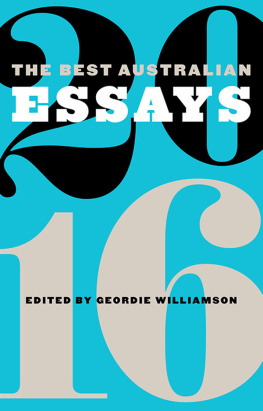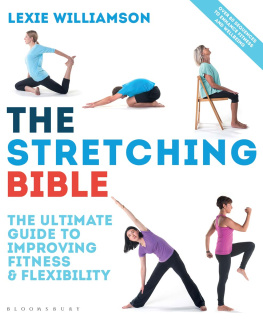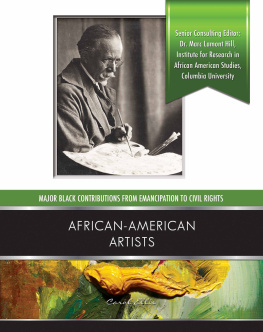
KENDELL GEERS Fuckface (Kendell Geers) 2007
Image courtesy of the artist
Photographer: Lydie Nesvadba
Kendell Geers

DAVID SOUTHWOOD Red Location Museum of the Peoples Struggle 2006
New Brighton, Port Elizabeth, Eastern Cape
David Southwood

WILLIAM KENTRIDGE Black Box/Chambre Noire (detail) 2005
Mixed-media installation in model theatre Commissioned by the Deutsche Guggenheim, Berlin
Image courtesy of the artist and the Goodman Gallery, Johannesburg
Photographer: John Hodgkiss
William Kentridge
Contents

GERARD SEKOTO Untitled (two men in chains) 1977
Watercolor on card
212 x 296 mm
Collection: Iziko South African National Gallery, Cape Town
Image courtesy of Iziko South African National Gallery
Photographer: Cecil de Koorte
The Gerard Sekoto Foundation

PENNY SIOPIS Patience on a Monument A History Painting (detail) 1988
Oil paint and collage
200 x 180 cm
Collection: William Humphries Art Gallery, Kimberley, South Africa
Photographer: Kathleen Grundlingh
Penny Siopis
This book is something that was waiting to be conceivedmore than an art history, a venture into existential aesthetics, a revelation of values beneath and above the daily IT battering that is to be sought only in the arts. Sue Williamsons work is all these.
Her texts following visual art carried along the dramatic trajectory of life-determining political changes in South Africa do not prescribe what the viewer-reader must think and accept but set in concept the roused right and necessity to interpret for oneself the essentialunavoidablerelation between the creative imagination, time, and place. From her own objective knowledge of the force of visual art in the development of the human intellect and her keen subjective insight as herself an artist, she writes vividly, and the accompanying reproduced examples of artists works arise out of rather than illustrate her discussion of each work and its creator.
The development of what we have been able to claim for some generations now as South African art, as one speaks of American or Australian art, is explored in this book under a succession of intriguing rubrics, from The Stifling Years: A Time of Exile through Culture Turns Activist, art as The Spread of a New Resistance, to Through the Lens brings not only an acceptance of photography into the canon but also photographs integrated with other materials in the defiantly eloquent ragbag of collage, paint, cloth, metal, whatever, to express a transformed image of time and experience. Performance art follows predictably.
Should I have said emergence of South African art rather than development? Because, revered rock paintings apart, I remember from my first childhood visits to the Johannesburg Art Gallery seeing South African art as a sculpture by Anton van Wouw entitled The Sleeping Kaffir (1907). There was also still life if not sleeping life: indigenous fruit and flowers, landscapes painted by European visitors with the inhabitants seen as romantic species if not actually beings without consciousness. As this remarkable book shows, there has been no still life, only upheaval, since the South African artists consciousness began to be invaded by human reality. The unspeakable brutality of apartheid will never be veiled by any Truth and Reconciliation while Jane Alexanders Butcher Boys appears in one of our public galleries. The satirical art begun as protest from Polly Street and epitomized decades later in a drawing where an overfed orator addresses an audience with a wind-up key in his back was searingly apposite to the Bad Old Days of fascist-racist South Africabut one cant resist seeing it relevant in our present times, with some different orator.
Freedom at Last is Williamsons rubric for Euphoria, Doubt, and Reflection, attributed to the 1990s. The work of our artists then and now is seen to be confronted deeply and essentially for us, with this promise of human fulfillment. Our artists, not just blacks in reassertion of the bulldozed aesthetic vision, the art of their past, but whites who are surely nothing if not African in their own perspective by now, are expressing art as public self-analysis of identity (I quote the phrase): Its meaning for all of us, each in his/her selfhood going through the same necessity, is vital.
Nadine Gordimer
Johannesburg, 2008
Nadine Gordimer was born in Springs, South Africa, in 1923 and has devoted her life to her writing. She was awarded the Nobel Prize for Literature in 1991 and is the author of fourteen novels, nine volumes of stories, and three nonfiction collections. In 1974 her novel The Conservationist was joint winner of the Booker Prize for Fiction. She lives in Johannesburg.

ROBIN RHODE Untitled (detail from the Dream House series) 2005
28 c-prints face-mounted with Plexiglas on aluminum panels
Image courtesy of the artist and Perry Rubenstein Gallery, New York
Robin Rhode
Much as the rest of us might want to know about the art of South Africa, during the apartheid years and since then, most of us dont. Sue Williamsons book brings it all closer. It is a chorus of so many different kinds of voices who have contributed to the visual history of their beloved country. Without prejudice she includes all media and all ways of dealing with the world through art: from old-fashioned painting to photography to performance, from anger to euphoria to humor to illumination.
The fact that Williamson is also an artistone whose own activist work during the apartheid era squarely took on so many of the social injusticesputs her in the position of not just knowing what she is writing about, but also a protagonist in the story. Recently I visited her studio in Cape Town. All the years she has spent believing in art as a form of social change were palpable. It is clear from her art that the struggle against social injustice did not end with apartheid. I was particularly drawn to her photographs of HIV -positive individuals, paired with their own words, shown written on the wall next to them. One text read:
I, Nelson Masombuka, am HIV -positive. At first it was difficult, because people around me could not understand my position. In the thick of things, I ended up losing my wife. And I lost popularity at the church where I was worshipping. People have, however, learned to accept my position and I am grateful for the support they are giving me. Nelson, HIV -positive
This work is really an image of change; it is about the transformation that is possible with the evolution of consciousness. A book like Williamsons, with its inclusion of such a wide range of work by so many artists, plays a major role in this journey. What youll find in it is all too rarely in the newspapers and the magazinesbut it is vital information.
Elton John
Atlanta, 2009
A multiple Grammy-winning legend and flamboyant superstar, Sir Elton John is among the most successful singer/songwriters of his generation. In the early 1990s, he established the Elton John AIDS Foundation ( EJAF ), r ecognized as is one of the worlds leading nonprofit HIV/AIDS organizations. Sir Elton John and his partner David Furnish continue to expand their internationally known collection of 20th century and contemporary fine art photography.






















